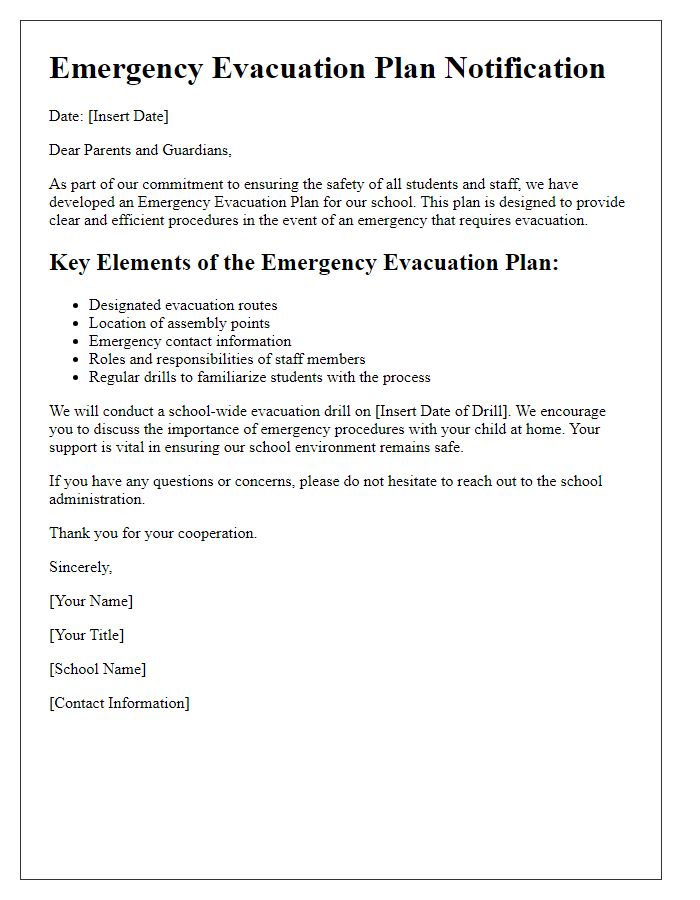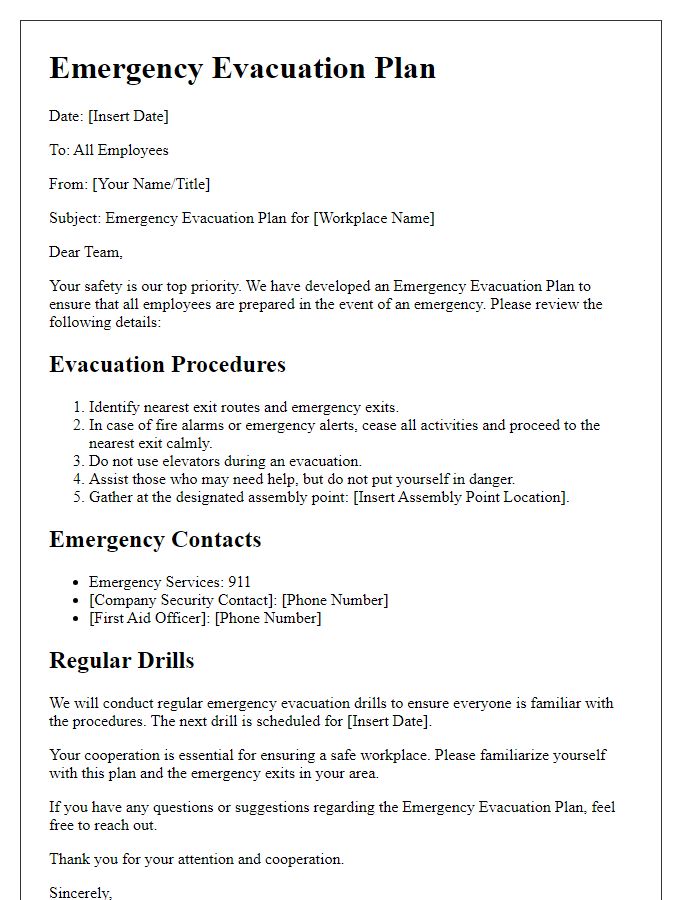In today's unpredictable world, having a solid emergency evacuation plan is more crucial than ever. We understand that preparing for unforeseen circumstances can feel overwhelming, but a well-structured plan can make all the difference for you and your loved ones. In this article, we'll guide you through essential aspects of creating an effective evacuation plan, ensuring that you feel confident and ready for anything. So, let's dive in and explore the steps to safeguard what matters most!

Clear and concise language
Emergency evacuation plans are critical for ensuring the safety of individuals in various settings, including buildings, workplaces, and public venues. A well-structured plan outlines procedures in case of unforeseen events such as fires, natural disasters, or other emergencies. Essential elements of an evacuation plan include designated exits, assembly points, and the responsibilities of staff members in guiding others safely. It is imperative for all occupants to familiarize themselves with the layout and signage indicating escape routes. Regular drills and training sessions enhance preparedness, ensuring that individuals can react swiftly and efficiently under stress. Maintaining updated contact lists and emergency services information is vital for effective communication during an evacuation.
Detailed evacuation routes
In emergency evacuation scenarios, clear communication of detailed evacuation routes is paramount for ensuring safety and efficiency. Designated evacuation routes must be mapped out prominently within buildings and public spaces, highlighting primary paths such as stairwells (minimum width of 36 inches) and exits (marked with illuminated signs) leading to assembly areas located at least 200 feet from structures. Specific landmarks, such as the main entrance of the facility and adjacent parking lots, should be noted for orientation. Map visuals should indicate obstacles that may impede escape, including locked doors, stair restrictions, or hazardous areas. Regular drills, conducted every six months, help familiarize occupants with these routes, reducing panic during real emergencies. It is essential to communicate accessibility measures for individuals with disabilities, ensuring alternative routes are available and well-marked. Emergency contact numbers, such as local fire department (911 in the U.S.) or facilities management, should accompany these evacuation routes to provide assistance if needed.
Contact information for emergency services
Emergency evacuation plans must prioritize timely communication. Essential contact information for emergency services includes local fire departments, such as the Los Angeles Fire Department, which can be reached at 911 in urgent situations. Police assistance, provided by organizations like the New York Police Department, is also accessible through 911. For medical emergencies, hospitals like Massachusetts General Hospital can be contacted via the non-emergency line if immediate assistance is not required. Additionally, local Red Cross chapters, such as the American Red Cross in Chicago, offer shelter and support services, with a helpline available at 1-800-733-2767. Keeping this information accessible ensures preparedness during crises.
Designated meeting points
In emergency situations, designated meeting points serve as safe zones for individuals to gather, ensuring an organized and efficient evacuation process. Locations such as the main lobby of the City Hall (123 Main St) and the community park (456 Oak Ave) provide clear, accessible areas for evacuees. The City Hall lobby accommodates large groups, featuring ample seating and shelter from harsh weather conditions, while the community park offers open space for families to regroup in a natural environment. Signage at buildings will guide individuals to these points, ensuring locations are easily identifiable during a crisis. Local authorities will frequently review and update these designated meeting points to reflect any changes in the area, ensuring safety and accessibility during emergencies.
Responsibilities and roles of team members
In an emergency evacuation plan, clear responsibilities and roles are essential for ensuring safety and efficiency. Team leaders coordinate the evacuation process, ensuring adherence to safety protocols and timelines. Communication officers disseminate information regarding evacuation routes and procedures to all personnel, utilizing digital platforms and physical notices. Safety marshals oversee designated exits, guiding individuals safely out of the building, and ensuring that pathways remain clear. First aid responders, trained in Basic Life Support, carry emergency kits and provide immediate medical assistance if needed. Support staff, familiar with attendance lists, account for all individuals to confirm everyone has evacuated. Security personnel monitor all entrances and exits to prevent unauthorized entry during the evacuation. Establishing these defined roles is vital for minimizing chaos and fostering a safe environment during emergencies.













Comments